Intaglio
Printing - An Introduction
The
intaglio method is the opposite to relief.
Soft ink is rubbed into the incised lines
of the design and considerable pressure
is exerted in the printing to squeeze the
ink out of the grooves onto the paper.
A
copper plate is the usual matrix and depending
on the technique the artist either engraves
or uses acid to cut his design into the
surface of the metal. The word intaglio
is from the Italian verb intagliare “to
incise”.
Ink
is applied with a soft leather pad or dabber
and the surface of the plate wiped with
a muslin rag to drag the ink thoroughly
into the grooves and to remove the surplus
from the surface. Finally the heel of the
palm of the hand is used to complete the ‘wiping’ of
the plate using a circular motion.
The
intaglio press comprises a double roller
and a flat steel bed, on which the inked
plate is placed face up. A dampened sheet
of paper and then a blanket are positioned
on top and the plate is ready to be passed
through the press. The bed of the press
is made to travel between the heavy rollers
by turning a handle (on the similar principle
to a mangle) which exerts the printing
pressure. In previous times the fresh print
was hung up to dry and old master prints
sometimes show traces of a related central
drying crease.
A ‘gallery’ of
etchings imaging
intaglio printmaking and
printing
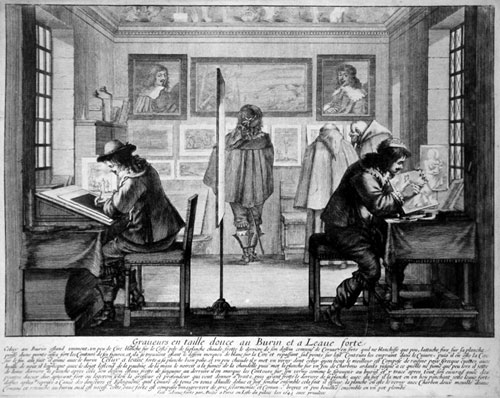
Abraham
Bosse (1602–1676): "Graveurs en taille
douce au Burin et
a L’eaue forte". (An
Engraver & an Etcher at work). Etching,
1643
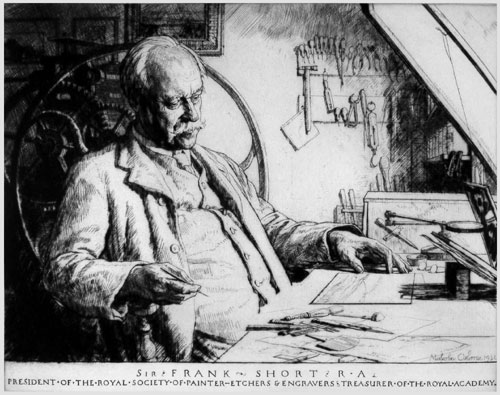
Malcom
Osborne (1880–1963): "Portrait of
Frank Short".
Drypoint, 1931. (263
x 332 mm)
Short
(1857–1945), in 1931 aged 74,
was the grand old man of British etching & engraving.
He had retired as professor of Engraving
at the Royal College of Art in 1924, but
was still active as an engraver, & as
President of the Royal Society of Painter-Etchers.
Short trained several generations of British
intaglio printmakers and was responsible
for the revival of mezzotint as a creative
printmaking technique.
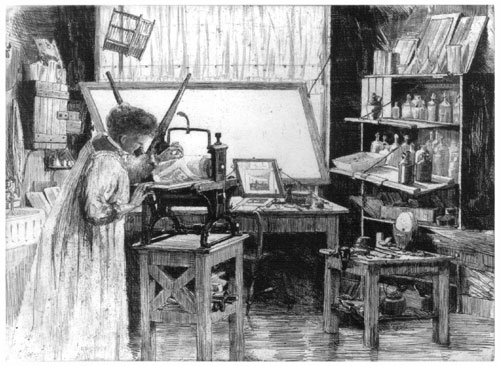
Constance
Pott (1862–1957): "Self-Portrait
in her etching studio, examining an impression
she has just printed as she lifts it
from
the bed of the press". Etching, c1900. (175
x 241 mm)
A
proof dedicated to Frank Short. Constance
Pott was
Short’s assistant
at the Royal College of Art.
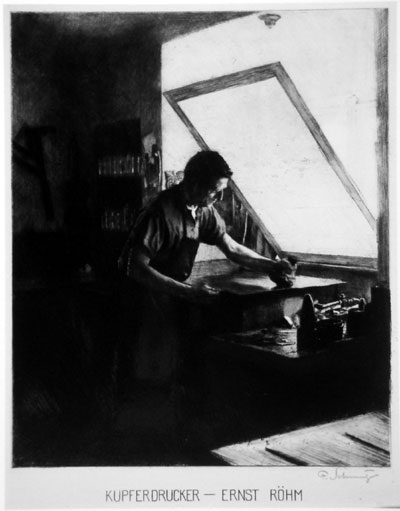
Ferdinand
Schmutzer (1870–1928):
"Portrait
of the Copperplate
Printer Ernst Röhm".
Colour
etching & drypoint, 1914
(365 x 283
mm)
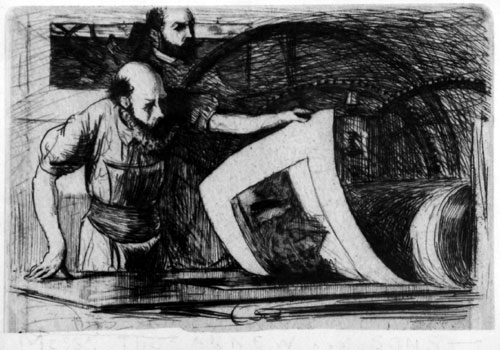
Robert
Macbeth (1848–1910): "The artist
supervising pulling a proof from the press,
with the printer Frederick Goulding".
Etching,
c1897, etched as exhibition invitation. |